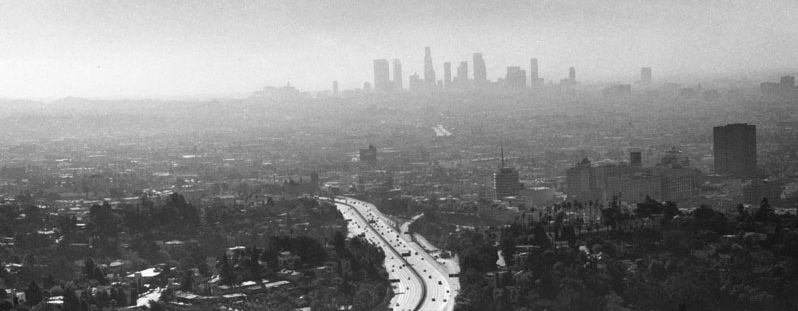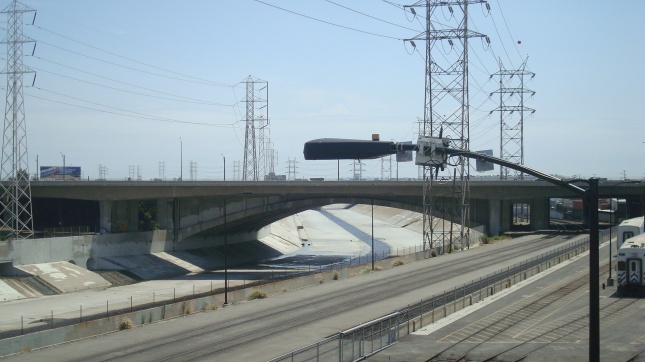A while ago I took a walk across the Sixth Street Bridge to get some photos of it before they tear it down. Looking out over the landscape, I saw the other bridges that span the LA River, linking Downtown and East LA. I started thinking it would be cool to take pictures of them as well.
It’s taken me forever to get started on that project, but recently I took a walk across the Cesar Chavez Bridge. There is something kind of thrilling about seeing the surrounding area from that vantage point. Much of the landscape is hard, grey concrete. Power lines criss-cross the sky. But you can also see the hills in the distance, and on the day I crossed the bridge there were massive clouds billowing all along the horizon.
Today the bridge is part of Cesar Chavez Avenue, created back in the nineties to commemorate the courageous labor leader who helped organize California’s farm workers. The segment that includes the bridge was formerly called Macy Street, but it’s also part of the historic Camino Real, the road built by the Spanish to connect their missions back when they governed California. The first bridge built on the site was erected in the nineteenth century, but it was demolished at the beginning of the twentieth. In the twenties, the City of LA began an effort to construct a series of viaducts across the LA River, and this bridge, then called the Macy Street Bridge, was part of that effort.
For years I’ve seen this massive mound of debris resting on the north side of the bridge. I have no idea where it came from or if it’s ever going away. If you look closely you can see that plants have started to grow here and there. It’s become part of the landscape, an artificial hill rising up over the river and the rail lines.
The bridge is lined with lampposts on either side, and decorated with porticos ornamented in the Spanish Revival style that was popular in the twenties. There are plaques affixed to the porticos explaining that the bridge is dedicated to Father Junipero Serra, the founder of the California missions. Serra’s legacy is controversial, since he was a major player in Spain’s effort to subjugate the native population. The Vatican’s recent decision to canonize him has ignited the debate all over again.
If you want to learn more about the Cesar Chavez Avenue Bridge, below is a link to an article on KCET’s web site that talks about the origins of a number of LA bridges. To see more images and to access info about it’s history, check out the links to the Library of Congress.
A Brief History of Bridges in Los Angeles County from KCET
Cesar Chavez Avenue Viaduct from Library of Congress








